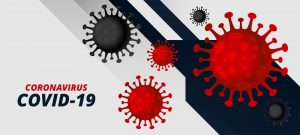Questions about the veracity of Canada’s Truth and Reconciliation Report on our Indian Residential Schools, and the meaning of the published death-rates in those schools, first arose when my colleague Rod Clifton, who worked for a year and a half in such a school at Inuvik, and whose wife spent ten years as a student in one, was asked: Was it really that bad? Grabbing little kids off reserves and forcing them into religious schools? Abuses, beatings, cultural genocide? He replied that many of the children “came to us straight off the land, hungry, sick, and poorly clothed, sometimes with mothers who begged us to take them in. But usually, they just straggled in with other children.” In some of the southern schools, this was a weekly-boarder situation. The children spent five days a week at the school, and went home on weekends to be with their families (if they had a family to stay with).
But the most important question of the Report Summary, would seem to be: What is the factual, versus the political truth, about the 3,201 children who were “killed by relentless waves of epidemics” in our residential schools in the 135-year period since the 1880s? The death of a child, any child, is the most mournful death of all, and to be sorely lamented, especially if it could have been prevented by a reasonable duty of care, such as we expect from a school. Mr. Clifton attests that residential school staff often “worked around the clock to protect students from such diseases,” and that all Canada’s residential schools had good infirmaries. So, is the number of deaths of native children reported by the TRC for 1902 – fully 2.74 per cent of the school population, as compared to 0.43 per cent in the non-native population – really proof of poor care and abuse of those children, as the summary of the Report suggests in morally-judgmental terms? Perhaps not.
In his fascinating study of life here prior to the arrival of Europeans, entitled 1491: New Revelations of the Americas Before Columbus (2005), Charles C. Mann informs us that native Americans have always died at unbelievably high rates from infectious diseases compared to those of European stock, and a close reading of his section on “The Genetics of Vulnerability” raises the possibility that our residential schools may actually have protected native children from far worse death-rates than they actually experienced.
Indian biochemistry, we learn, is doubly compromised. First, their immune systems are “much more restricted than European immune systems,” which means they are more vulnerable to disease-driven sickness and death than non-natives. That is simply because the Europeans who came to North America had almost all been exposed to diseases such as smallpox and measles as children, “and those who didn’t die, were immune.” In short, “smallpox and other European diseases didn’t exist in the Americas, and so every Indian was susceptible to them.”
The second reason is that all American Indians, whom it is believed came to North America more than ten thousand years ago from Siberia across the Bering Sea land-bridge, not only lacked a normal immunity to those European diseases, but were also especially vulnerable to genetic diseases, because they all shared (and most continue to share) the same restricted gene pool from a very small group of ancestors.
Mann cites the work of Yale University virologist, Professor Francis Black, an expert on specialized molecules called “Human Leukocyte Antigens” (HLAs), which rid most people of what these antigens recognize as cell-garbage, like viruses. Overall, he writes, “Indians have fewer HLA types” than other populations. Most of us have thirty-five main classes of HLAs, “whereas Indian groups have no more than seventeen.” As a result, Black argues, “people of the New World are unusually susceptible to diseases of the Old.” The only other group Black has found that was just as susceptible to these diseases then, as now, is their closest genetic relative: Indigenous Siberians.
Mann then cites the sad 1967 case of how a single case of measles in a two-year-old baby ravaged the Yanomami native population in a remote region of Brazil. The Yanomami have exactly the same limited genetic profile as the Indians of Canada. Scientists rushed ahead of the epidemic wave to preventively vaccinate everyone not yet sick, but without success. After it was over, the mean death-rate of all the villages, was 8.8 per cent: “Almost one out of ten people died from a sickness that in Western societies is just a childhood annoyance.” That is four or five times higher than the rate in our residential schools.
Familiarity with the factual and historical, rather than political “truth” about native people and their restricted immune and genetic history, soon reveals the shocking fact that in the century and a quarter between the arrival of Columbus in 1491, and the American Pilgrims in 1620, fully 95 per cent of all northeast coastal Indians ranging from the Carolinas to Nova Scotia, were wiped out by European diseases, against which they had no immune or genetic defence.
There is reason to believe that the cited 1902 death rate of 2.74 per cent, after “relentless waves of epidemics,” means our residential schools did a pretty respectable job of handling this crisis.

